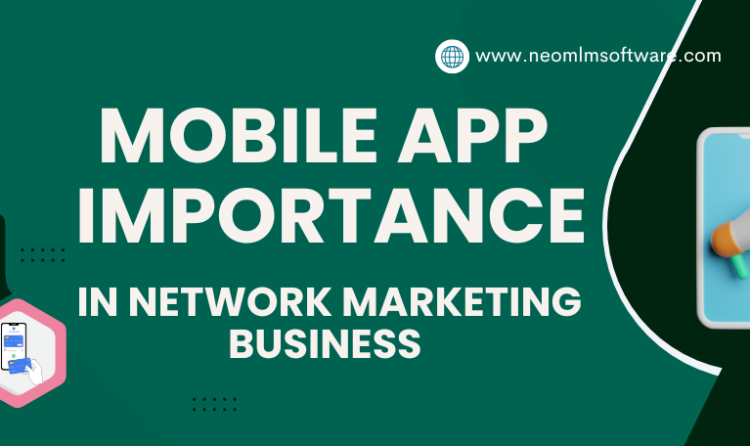How MLM Software Enhances Sales and Downline Management
In the realm of Multi-Level Marketing (MLM), success hinges on effective sales strategies and seamless downline management.
This blog explores the multifaceted ways in which MLM software enhances sales and optimizes downline management, offering a comprehensive view of the tools and features that empower MLM businesses to thrive.
– How MLM Software can enhance your network marketing business
I. Streamlining Sales Processes:
1. Automated Sales Tracking: One of the main advantages of MLM software is its ability to automate sales tracking. Traditional methods involve manual entry, leaving room for errors and inefficiencies. With MLM software, sales transactions are recorded in real-time, providing a centralized and accurate database that simplifies the tracking process. This not only saves time but also ensures that sales data is always up-to-date.
2. Order Processing Efficiency: MLM software facilitates swift and efficient order processing. From order placement to payment confirmation, the software automates each step, reducing the likelihood of errors and delays. This streamlined process not only enhances customer satisfaction but also frees up valuable time for distributors to focus on building their networks and expanding their customer base.
3. Personalized Marketing Tools: MLM software often comes equipped with personalized marketing tools that empower distributors to tailor their strategies. From customer segmentation to targeted promotions, these tools enable distributors to connect with their audience on a more personalized level. This targeted approach enhances the effectiveness of marketing efforts, resulting in increased sales and improved customer loyalty.
4. Real-time Inventory Management: Effective inventory management is critical in MLM, where product availability directly impacts sales. MLM software provides real-time insights into inventory levels, ensuring that distributors are always aware of product availability. This not only prevents stockouts but also enables distributors to capitalize on in-demand products, maximizing sales opportunities.
II. Empowering Downline Management:
1. Structured Downline Organization: MLM software introduces a structured approach to downline organization. Distributors can easily visualize their network hierarchy, track the performance of team members, and identify areas for growth. This structured representation fosters a sense of clarity and enables distributors to make informed decisions about where to focus their efforts for optimal results.
2. Performance Analytics: MLM software goes beyond basic downline organization by providing comprehensive performance analytics. Distributors can access detailed reports on the sales and recruitment activities of their downline, allowing them to identify top performers, recognize areas for improvement, and strategize for growth. These analytics serve as a valuable tool for informed decision-making.
3. Automated Commission Calculations: Commission structures in MLM can be intricate, involving multiple levels and compensation plans. Manually calculating commissions is time-consuming and prone to errors. MLM software automates this process, ensuring that commissions are accurately calculated based on sales and recruitment activities. Distributors can trust that they are being fairly compensated, fostering trust and motivation within the network.
4. Communication and Training Tools: Effective communication is essential in downline management. MLM software often includes built-in communication tools such as messaging systems and newsletters. Distributors can use these tools to stay connected with their downline, share important updates, and provide ongoing training. This fosters a sense of community and support within the network, leading to increased engagement and productivity.
III. Enhancing User Experience:
1. User-Friendly Interfaces: MLM software is designed with user-friendly interfaces that cater to distributors with varying levels of technical expertise. Intuitive dashboards and navigation make it easy for distributors to access the information they need, empowering them to focus on their core activities of selling and building their networks.
2. Mobile Accessibility: In the fast-paced world of MLM, distributors are constantly on the move. Mobile accessibility is a key feature of MLM software, allowing distributors to manage their business from anywhere at any time. This flexibility not only increases productivity but also ensures that distributors can stay connected with their downline even while on the go.
3. Training and Support Resources: MLM software often includes training and support resources that empower distributors to maximize their potential. From video tutorials to FAQs and live support, these resources ensure that distributors can leverage the full capabilities of the software. This proactive approach to support contributes to the overall success of the MLM business.
Conclusion:
By streamlining sales processes, empowering downline management, and enhancing the overall user experience, MLM software has become a cornerstone for success in this industry. As technology continues to evolve, the integration of robust MLM software will likely become even more crucial for businesses looking to stay ahead of the curve and thrive in the competitive world of network marketing.
Related:
1. The Evolution of MLM Software
2. Customizing MLM Software for Different Compensation Plans
3. MLM Software vs. Traditional Business Tools: Advantages and Differences
4. Choosing the Right MLM Software: Key Features and Considerations







